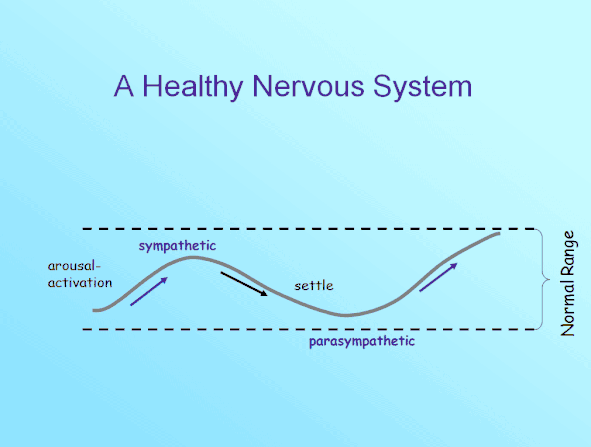Why Understanding Your Window of Tolerance is Key to Optimal Living
How often do you let your emotions drive your actions? When you get in a disagreement, do you tend to lash out? When you’re nervous, do you let it stop you from moving forward? Maybe you find yourself withdrawing from others and shutting down after stressful events. We all operate differently to stimulus, but if you learn how to read where you’re going, you can pull yourself back into your Window of Tolerance.
Window of Tolerance (WOT), first coined by Dr. Dan Siegel, is a phrase used to describe the zone of arousal where we function most effectively. What do I mean by this? If we are operating in our WOT, we can respond to all situations thrown our way without getting flustered and thrown off track. We are in a rested, ready state. Below is a diagram of how it looks to operate in the rested, ready state.
(Levine, Ogden, Siegel)
As we move through the day. We are flowing back and forth with a sense of calm. We can act when we need to but also come right back down. You don’t spend excessive amounts of time ruminating over something that happened during the day. You can easily stay focused and present on the task at hand. You are operating in your optimal state.
On the other hand, if we are outside of our WOT, we go into survival mode, fight, flight, or freeze. On the upper end of the spectrum is hyperarousal. This is the sympathetic overdrive where we feel overwhelmed, anxious, our worrying thoughts begin to snowball out of control. On the other end is hypoarousal. This is a freeze response. We become depressed, shut down, and feel numb. You can see this in the diagram below.
(Levine, Ogden, Siegel)
Getting stuck “on” and stuck “off” will happen from time to time; no matter how good you are at regulating your nervous system, the key is bringing yourself back down into the WOT and not staying chronically stuck. How do we do this?
The first thing we do is work to widen our WOT. We do this by consciously putting ourselves into difficult situations. We go just a bit outside of our current WOT, which could be doing a challenging workout, getting in an ice bath, giving a presentation at work, or having a difficult conversation with a loved one. By consciously stressing ourselves, we are also learning to read our state. When we can read the signals in our body and see when we are about to get pushed into the hyperarousal or hypoarousal, we can use tools, such as the breath, to pull us back into our WOT.
With practice, you can learn to have more control over your emotional reactivity in your daily life. You won’t get upset because of traffic or other drivers. You won’t become angry when a disagreement occurs with your spouse and you’ll have the chance to take a step back and allow your rational mind to help respond to the situation.
To Sum it up
Learning to operate within your WOT will go a long way in allowing you to handle difficult events in your life. To do this, you must first learn to read your nervous system. When you begin to get stressed, where do you feel it in your body? It could be a tightness in the chest or weight in your stomach. What happens to your breath? Is it fast or slow, shallow or deep? Can you tell what is happening to your heart rate? These are all signals to watch for. Once you learn to read your state, using tools to regulate your state will allow you to flow through your WOT with a sense of calm. The breath is one of the most powerful tools we have for regulating our state. To come down out of a hyper-aroused state, slow your exhale down. Breathe in through the nose and slowly out of the mouth. Can you breathe in for three seconds and out for six seconds? Can you pull the breath deep into your belly? Low, slow breathing is one of just many tools you can use to regulate your state. Not only is regulating your state essential but also expanding your WOT so you can handle life with more ease and fluidity. To do this, you must consciously stress yourself. Do things that scare you and test your abilities. Not only will you feel more calm and confident, but you will achieve more in your life!
Call To Action
At Symmetry, we help busy people take back control of their lives so they have more time, more energy, and less stress! If you’re ready to take back control of your life, set-up a FREE 15-minute call today! We are currently offering virtual breath classes to help you begin to experience the benefits of the breath. You can access our schedule here. Our programs will improve your mindset, your performance, and give you tools to better handle the stresses of everyday life. Check out our website www.symmetry.live to find out more information.









